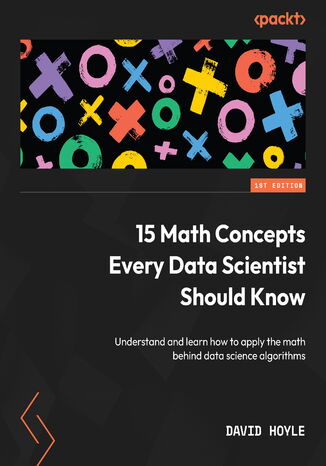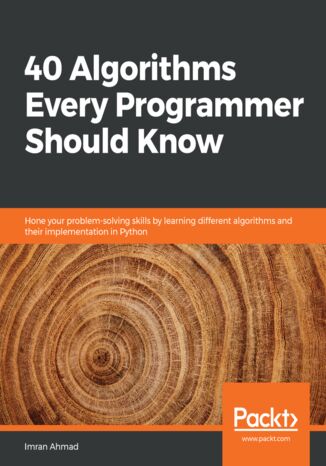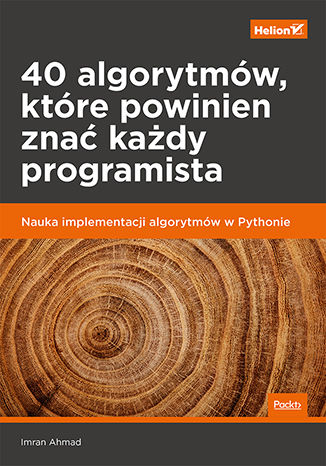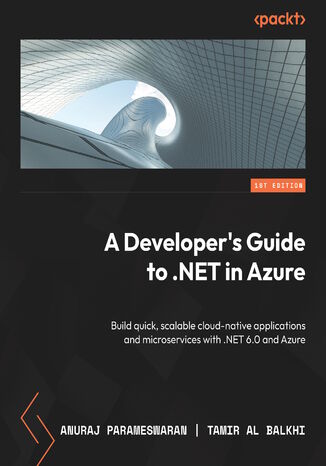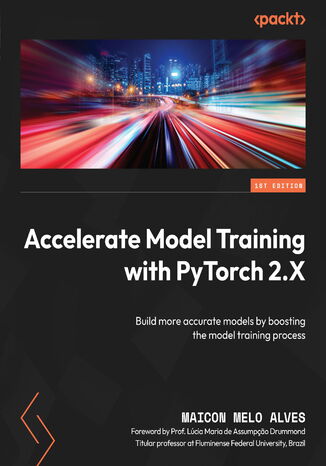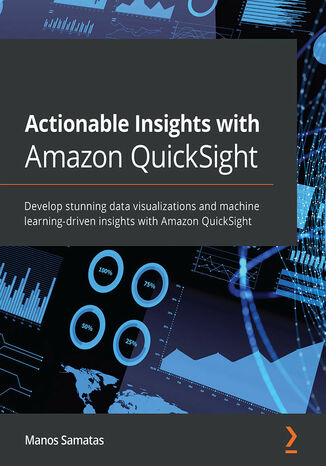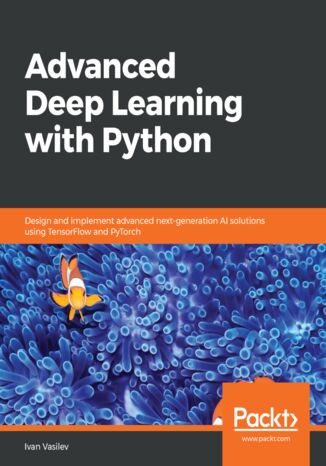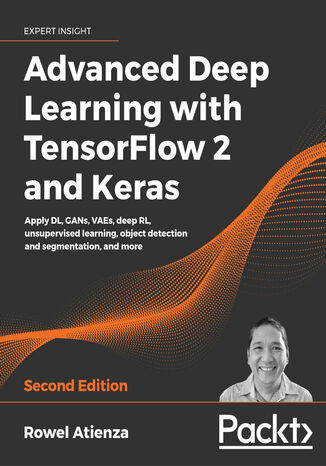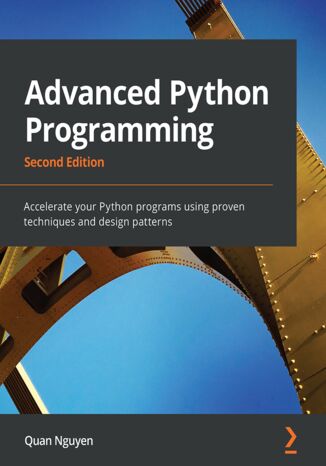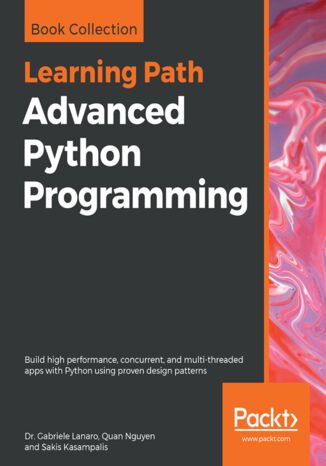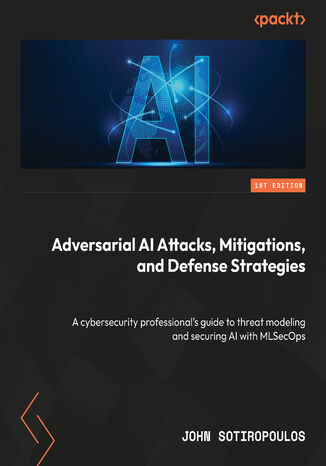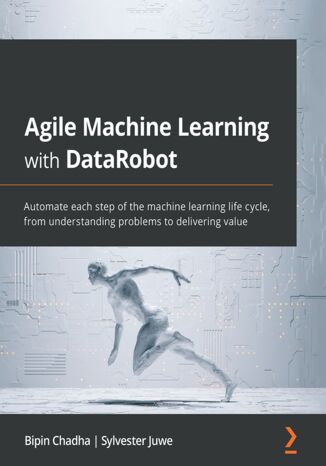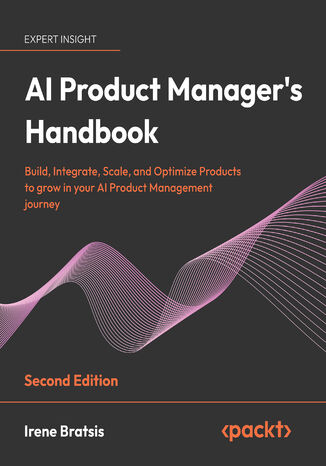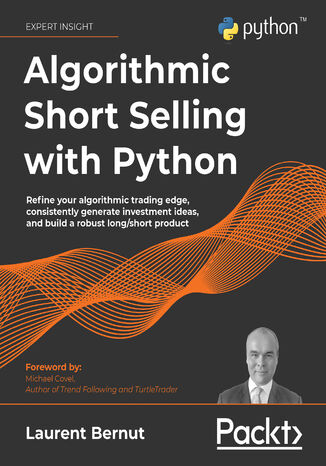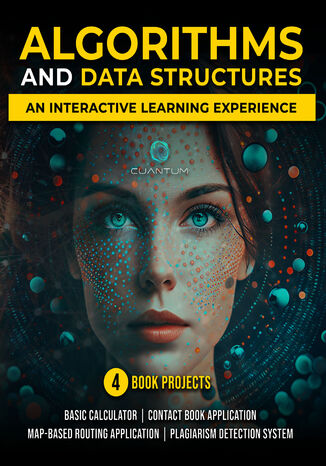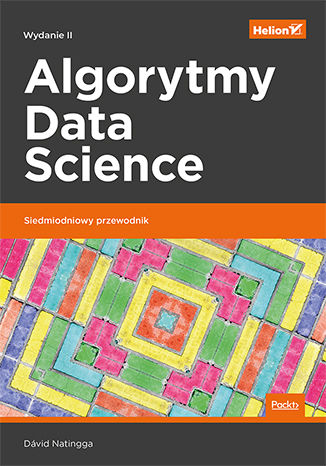Kategorien
E-Books
-
Wirtschaft
- Bitcoin
- Geschäftsfrau
- Coaching
- Controlling
- E-Business
- Ökonomie
- Finanzen
- Börse und Investitionen
- Persönliche Kompetenzen
- Computer im Büro
- Kommunikation und Verhandlungen
- Kleines Unternehmen
- Marketing
- Motivation
- Multimedia-Training
- Immobilien
- Überzeugung und NLP
- Steuern
- Sozialpolitik
- Handbȕcher
- Präsentationen
- Führung
- Public Relation
- Berichte, Analysen
- Geheimnis
- Social Media
- Verkauf
- Start-up
- Ihre Karriere
- Management
- Projektmanagement
- Personal (HR)
-
Für Kinder
-
Für Jugendliche
-
Bildung
-
Enzyklopädien, Wörterbücher
-
E-Presse
- Architektura i wnętrza
- Sicherheit und Gesundheit am Arbeitsplatz
- Biznes i Ekonomia
- Haus und Garten
- E-Business
- Ekonomia i finanse
- Esoterik
- Finanzen
- Persönliche Finanzen
- Unternehmen
- Fotografie
- Informatik
- HR und Gehaltsabrechnung
- Frauen
- Computer, Excel
- Buchhaltung
- Kultur und Literatur
- Wissenschaftlich und akademisch
- Umweltschutz
- meinungsbildend
- Bildung
- Steuern
- Reisen
- Psychologie
- Religion
- Landwirtschaft
- Buch- und Pressemarkt
- Transport und Spedition
- Gesundheit und Schönheit
-
Geschichte
-
Informatik
- Office-Programme
- Datenbank
- Bioinformatik
- IT Branche
- CAD/CAM
- Digital Lifestyle
- DTP
- Elektronik
- Digitale Fotografie
- Computergrafik
- Spiele
- Hacking
- Hardware
- IT w ekonomii
- Wissenschaftliche Pakete
- Schulbücher
- Computergrundlagen
- Programmierung
- Mobile-Programmierung
- Internet-Server
- Computernetzwerke
- Start-up
- Betriebssysteme
- Künstliche Inteligenz
- Technik für Kinder
- Webmaster
-
Andere
-
Fremdsprachen lernen
-
Kultur und Kunst
-
Lektüre
-
Literatur
- Anthologien
- Ballade
- Biografien und Autobiografien
- Für Erwachsene
- Drama
- Tagebücher, Memoiren, Briefe
- Epos
- Essay
- Science Fiction
- Felietonys
- Fiktion
- Humor, Satire
- Andere
- Klassisch
- Krimi
- Sachbücher
- Belletristik
- Mity i legendy
- Nobelpreisträger
- Kurzgeschichten
- Gesellschaftlich
- Okultyzm i magia
- Erzählung
- Erinnerungen
- Reisen
- Gedicht
- Poesie
- Politik
- Populärwissenschaftlich
- Roman
- Historischer Roman
- Prosa
- Abenteuer
- Journalismus
- Reportage
- Romans i literatura obyczajowa
- Sensation
- Thriller, Horror
- Interviews und Erinnerungen
-
Naturwissenschaften
-
Sozialwissenschaften
-
Schulbücher
-
Populärwissenschaft und akademisch
- Archäologie
- Bibliotekoznawstwo
- Filmwissenschaft
- Philologie
- Polnische Philologie
- Philosophie
- Finanse i bankowość
- Erdkunde
- Wirtschaft
- Handel. Weltwirtschaft
- Geschichte und Archäologie
- Kunst- und Architekturgeschichte
- Kulturwissenschaft
- Linguistik
- Literaturwissenschaft
- Logistik
- Mathematik
- Medizin
- Geisteswissenschaften
- Pädagogik
- Lehrmittel
- Populärwissenschaftlich
- Andere
- Psychologie
- Soziologie
- Theatrologie
- Teologie
- Theorien und Wirtschaftswissenschaften
- Transport i spedycja
- Sportunterricht
- Zarządzanie i marketing
-
Handbȕcher
-
Spielanleitungen
-
Professioneller und fachkundige Leitfaden
-
Jura
- Sicherheit und Gesundheit am Arbeitsplatz
- Geschichte
- Verkehrsregeln. Führerschein
- Rechtswissenschaften
- Gesundheitswesen
- Allgemeines. Wissenskompendium
- akademische Bücher
- Andere
- Bau- und Wohnungsrecht
- Zivilrecht
- Finanzrecht
- Wirtschaftsrecht
- Wirtschafts- und Handelsrecht
- Strafrecht
- Strafrecht. Kriminelle Taten. Kriminologie
- Internationales Recht
- Internationales und ausländisches Recht
- Gesundheitsschutzgesetz
- Bildungsrecht
- Steuerrecht
- Arbeits- und Sozialversicherungsrecht
- Öffentliches, Verfassungs- und Verwaltungsrecht
- Familien- und Vormundschaftsrecht
- Agrarrecht
- Sozialrecht, Arbeitsrecht
- EU-Recht
- Industrie
- Agrar- und Umweltschutz
- Wörterbücher und Enzyklopädien
- Öffentliche Auftragsvergabe
- Management
-
Führer und Reisen
- Afrika
- Alben
- Südamerika
- Mittel- und Nordamerika
- Australien, Neuseeland, Ozeanien
- Österreich
- Asien
- Balkan
- Naher Osten
- Bulgarien
- China
- Kroatien
- Tschechische Republik
- Dänemark
- Ägypten
- Estland
- Europa
- Frankreich
- Berge
- Griechenland
- Spanien
- Niederlande
- Island
- Litauen
- Lettland
- Mapy, Plany miast, Atlasy
- Miniführer
- Deutschland
- Norwegen
- Aktive Reisen
- Polen
- Portugal
- Andere
- Przewodniki po hotelach i restauracjach
- Russland
- Rumänien
- Slowakei
- Slowenien
- Schweiz
- Schweden
- Welt
- Türkei
- Ukraine
- Ungarn
- Großbritannien
- Italien
-
Psychologie
- Lebensphilosophien
- Kompetencje psychospołeczne
- zwischenmenschliche Kommunikation
- Mindfulness
- Allgemeines
- Überzeugung und NLP
- Akademische Psychologie
- Psychologie von Seele und Geist
- Arbeitspsychologie
- Relacje i związki
- Elternschafts- und Kinderpsychologie
- Problemlösung
- Intellektuelle Entwicklung
- Geheimnis
- Sexualität
- Verführung
- Aussehen ind Image
- Lebensphilosophien
-
Religion
-
Sport, Fitness, Diäten
-
Technik und Mechanik
Hörbücher
-
Wirtschaft
- Bitcoin
- Geschäftsfrau
- Coaching
- Controlling
- E-Business
- Ökonomie
- Finanzen
- Börse und Investitionen
- Persönliche Kompetenzen
- Kommunikation und Verhandlungen
- Kleines Unternehmen
- Marketing
- Motivation
- Immobilien
- Überzeugung und NLP
- Steuern
- Sozialpolitik
- Handbȕcher
- Präsentationen
- Führung
- Public Relation
- Geheimnis
- Social Media
- Verkauf
- Start-up
- Ihre Karriere
- Management
- Projektmanagement
- Personal (HR)
-
Für Kinder
-
Für Jugendliche
-
Bildung
-
Enzyklopädien, Wörterbücher
-
E-Presse
-
Geschichte
-
Informatik
-
Andere
-
Fremdsprachen lernen
-
Kultur und Kunst
-
Lektüre
-
Literatur
- Anthologien
- Ballade
- Biografien und Autobiografien
- Für Erwachsene
- Drama
- Tagebücher, Memoiren, Briefe
- Epos
- Essay
- Science Fiction
- Felietonys
- Fiktion
- Humor, Satire
- Andere
- Klassisch
- Krimi
- Sachbücher
- Belletristik
- Mity i legendy
- Nobelpreisträger
- Kurzgeschichten
- Gesellschaftlich
- Okultyzm i magia
- Erzählung
- Erinnerungen
- Reisen
- Poesie
- Politik
- Populärwissenschaftlich
- Roman
- Historischer Roman
- Prosa
- Abenteuer
- Journalismus
- Reportage
- Romans i literatura obyczajowa
- Sensation
- Thriller, Horror
- Interviews und Erinnerungen
-
Naturwissenschaften
-
Sozialwissenschaften
-
Populärwissenschaft und akademisch
- Archäologie
- Philosophie
- Wirtschaft
- Handel. Weltwirtschaft
- Geschichte und Archäologie
- Kunst- und Architekturgeschichte
- Kulturwissenschaft
- Literaturwissenschaft
- Mathematik
- Medizin
- Geisteswissenschaften
- Pädagogik
- Lehrmittel
- Populärwissenschaftlich
- Andere
- Psychologie
- Soziologie
- Teologie
- Zarządzanie i marketing
-
Handbȕcher
-
Professioneller und fachkundige Leitfaden
-
Jura
-
Führer und Reisen
-
Psychologie
- Lebensphilosophien
- zwischenmenschliche Kommunikation
- Mindfulness
- Allgemeines
- Überzeugung und NLP
- Akademische Psychologie
- Psychologie von Seele und Geist
- Arbeitspsychologie
- Relacje i związki
- Elternschafts- und Kinderpsychologie
- Problemlösung
- Intellektuelle Entwicklung
- Geheimnis
- Sexualität
- Verführung
- Aussehen ind Image
- Lebensphilosophien
-
Religion
-
Sport, Fitness, Diäten
-
Technik und Mechanik
Videokurse
-
Datenbank
-
Big Data
-
Biznes, ekonomia i marketing
-
Cybersicherheit
-
Data Science
-
DevOps
-
Für Kinder
-
Elektronik
-
Grafik / Video / CAX
-
Spiele
-
Microsoft Office
-
Entwicklungstools
-
Programmierung
-
Persönliche Entwicklung
-
Computernetzwerke
-
Betriebssysteme
-
Softwaretest
-
Mobile Geräte
-
UX/UI
-
Web development
-
Management
Podcasts
- E-Books
- Programmierung
- Python
Python
Data science combines the power of data with the rigor of scientific methodology, with mathematics providing the tools and frameworks for analysis, algorithm development, and deriving insights. As machine learning algorithms become increasingly complex, a solid grounding in math is crucial for data scientists. David Hoyle, with over 30 years of experience in statistical and mathematical modeling, brings unparalleled industrial expertise to this book, drawing from his work in building predictive models for the world's largest retailers. Encompassing 15 crucial concepts, this book covers a spectrum of mathematical techniques to help you understand a vast range of data science algorithms and applications. Starting with essential foundational concepts, such as random variables and probability distributions, you’ll learn why data varies, and explore matrices and linear algebra to transform that data. Building upon this foundation, the book spans general intermediate concepts, such as model complexity and network analysis, as well as advanced concepts such as kernel-based learning and information theory. Each concept is illustrated with Python code snippets demonstrating their practical application to solve problems.By the end of the book, you’ll have the confidence to apply key mathematical concepts to your data science challenges.
Algorithms have always played an important role in both the science and practice of computing. Beyond traditional computing, the ability to use algorithms to solve real-world problems is an important skill that any developer or programmer must have. This book will help you not only to develop the skills to select and use an algorithm to solve real-world problems but also to understand how it works.You’ll start with an introduction to algorithms and discover various algorithm design techniques, before exploring how to implement different types of algorithms, such as searching and sorting, with the help of practical examples. As you advance to a more complex set of algorithms, you'll learn about linear programming, page ranking, and graphs, and even work with machine learning algorithms, understanding the math and logic behind them. Further on, case studies such as weather prediction, tweet clustering, and movie recommendation engines will show you how to apply these algorithms optimally. Finally, you’ll become well versed in techniques that enable parallel processing, giving you the ability to use these algorithms for compute-intensive tasks.By the end of this book, you'll have become adept at solving real-world computational problems by using a wide range of algorithms.
40 algorytmów, które powinien znać każdy programista. Nauka implementacji algorytmów w Pythonie
Wiedza o algorytmach jest niezbędna każdemu, kto rozwiązuje problemy programistyczne. Algorytmy są również ważne w teorii i praktyce obliczeń. Każdy programista powinien znać możliwie szeroki ich zakres. Powinien też umieć z nich korzystać przy rozwiązywaniu rzeczywistych problemów, w tym przy projektowaniu algorytmów, ich modyfikacji i implementacji. Niezależnie od tego, czy zajmujesz się sztuczną inteligencją, zabezpieczaniem systemów informatycznych lub inżynierią danych, musisz dobrze zrozumieć, czym właściwie są i jak działają algorytmy. Ta książka jest praktycznym wprowadzeniem do algorytmów i ich zastosowania. Znalazły się w niej podstawowe informacje i pojęcia dotyczące algorytmów, ich działania, a także ograniczeń, jakim podlegają. Opisano też techniki ich projektowania z uwzględnieniem wymagań dotyczących struktur danych. Zaprezentowano klasyczne algorytmy sortowania i wyszukiwania, algorytmy grafowe, jak również wiele zagadnień związanych ze sztuczną inteligencją: algorytmy uczenia maszynowego, sieci neuronowych i przetwarzania języka naturalnego. Ważną częścią publikacji są rozdziały poświęcone przetwarzaniu danych i kryptografii oraz algorytmom powiązanym z tymi zagadnieniami. Wartościowym podsumowaniem prezentowanych treści jest omówienie technik pracy z problemami NP-trudnymi. W książce między innymi: struktury danych i algorytmy w bibliotekach Pythona algorytm grafowy służący do wykrywania oszustw w procesie analizy sieciowej przewidywanie pogody przy użyciu algorytmów uczenia nadzorowanego rozpoznawanie obrazu za pomocą syjamskich sieci neuronowych tworzenie systemu rekomendacji filmów szyfrowanie symetryczne i asymetryczne podczas wdrażania modelu uczenia maszynowego Oto algorytm: poznaj, zaimplementuj, zastosuj!
Anuraj Parameswaran, Tamir Al Balkhi
A Developer’s Guide to .NET in Azure helps you embark on a transformative journey through Microsoft Azure that is tailored to .NET developers. This book is a curated compendium that’ll enable you to master the creation of resilient, scalable, and highly available applications.The book is divided into four parts, with Part 1 demystifying Azure for you and emphasizing the portal's utility and seamless integration. The chapters in this section help you configure your workspace for optimal Azure synergy. You’ll then move on to Part 2, where you’ll explore serverless computing, microservices, containerization, Dapr, and Azure Kubernetes Service for scalability, and build pragmatic, cost-effective applications using Azure Functions and Container apps. Part 3 delves into data and storage, showing you how to utilize Azure Blob Storage for unstructured data, Azure SQL Database for structured data, and Azure Cosmos DB for document-oriented data. The final part teaches you about messaging and security, utilizing Azure App Configuration, Event Hubs, Service Bus, Key Vault, and Azure AD B2C for robust, secure applications.By the end of this book, you’ll have mastered Azure's responsive infrastructure for exceptional applications.
Maicon Melo Alves, Lúcia Maria de Assumpçao Drummond
This book, written by an HPC expert with over 25 years of experience, guides you through enhancing model training performance using PyTorch. Here you’ll learn how model complexity impacts training time and discover performance tuning levels to expedite the process, as well as utilize PyTorch features, specialized libraries, and efficient data pipelines to optimize training on CPUs and accelerators. You’ll also reduce model complexity, adopt mixed precision, and harness the power of multicore systems and multi-GPU environments for distributed training. By the end, you'll be equipped with techniques and strategies to speed up training and focus on building stunning models.
Amazon Quicksight is an exciting new visualization that rivals PowerBI and Tableau, bringing several exciting features to the table – but sadly, there aren’t many resources out there that can help you learn the ropes. This book seeks to remedy that with the help of an AWS-certified expert who will help you leverage its full capabilities.After learning QuickSight’s fundamental concepts and how to configure data sources, you’ll be introduced to the main analysis-building functionality of QuickSight to develop visuals and dashboards, and explore how to develop and share interactive dashboards with parameters and on-screen controls. You’ll dive into advanced filtering options with URL actions before learning how to set up alerts and scheduled reports. Next, you’ll familiarize yourself with the types of insights before getting to grips with adding ML insights such as forecasting capabilities, analyzing time series data, adding narratives, and outlier detection to your dashboards. You’ll also explore patterns to automate operations and look closer into the API actions that allow us to control settings. Finally, you’ll learn advanced topics such as embedded dashboards and multitenancy.By the end of this book, you’ll be well-versed with QuickSight’s BI and analytics functionalities that will help you create BI apps with ML capabilities.
In order to build robust deep learning systems, you’ll need to understand everything from how neural networks work to training CNN models. In this book, you’ll discover newly developed deep learning models, methodologies used in the domain, and their implementation based on areas of application. You’ll start by understanding the building blocks and the math behind neural networks, and then move on to CNNs and their advanced applications in computer vision. You'll also learn to apply the most popular CNN architectures in object detection and image segmentation. Further on, you’ll focus on variational autoencoders and GANs. You’ll then use neural networks to extract sophisticated vector representations of words, before going on to cover various types of recurrent networks, such as LSTM and GRU. You’ll even explore the attention mechanism to process sequential data without the help of recurrent neural networks (RNNs). Later, you’ll use graph neural networks for processing structured data, along with covering meta-learning, which allows you to train neural networks with fewer training samples. Finally, you’ll understand how to apply deep learning to autonomous vehicles.By the end of this book, you’ll have mastered key deep learning concepts and the different applications of deep learning models in the real world.
Advanced Deep Learning with TensorFlow 2 and Keras, Second Edition is a completely updated edition of the bestselling guide to the advanced deep learning techniques available today. Revised for TensorFlow 2.x, this edition introduces you to the practical side of deep learning with new chapters on unsupervised learning using mutual information, object detection (SSD), and semantic segmentation (FCN and PSPNet), further allowing you to create your own cutting-edge AI projects.Using Keras as an open-source deep learning library, the book features hands-on projects that show you how to create more effective AI with the most up-to-date techniques.Starting with an overview of multi-layer perceptrons (MLPs), convolutional neural networks (CNNs), and recurrent neural networks (RNNs), the book then introduces more cutting-edge techniques as you explore deep neural network architectures, including ResNet and DenseNet, and how to create autoencoders. You will then learn about GANs, and how they can unlock new levels of AI performance.Next, you’ll discover how a variational autoencoder (VAE) is implemented, and how GANs and VAEs have the generative power to synthesize data that can be extremely convincing to humans. You'll also learn to implement DRL such as Deep Q-Learning and Policy Gradient Methods, which are critical to many modern results in AI.
Python's powerful capabilities for implementing robust and efficient programs make it one of the most sought-after programming languages.In this book, you'll explore the tools that allow you to improve performance and take your Python programs to the next level.This book starts by examining the built-in as well as external libraries that streamline tasks in the development cycle, such as benchmarking, profiling, and optimizing. You'll then get to grips with using specialized tools such as dedicated libraries and compilers to increase your performance at number-crunching tasks, including training machine learning models.The book covers concurrency, a major solution to making programs more efficient and scalable, and various concurrent programming techniques such as multithreading, multiprocessing, and asynchronous programming.You'll also understand the common problems that cause undesirable behavior in concurrent programs.Finally, you'll work with a wide range of design patterns, including creational, structural, and behavioral patterns that enable you to tackle complex design and architecture challenges, making your programs more robust and maintainable.By the end of the book, you'll be exposed to a wide range of advanced functionalities in Python and be equipped with the practical knowledge needed to apply them to your use cases.
Dr. Gabriele Lanaro, Quan Nguyen, Sakis Kasampalis
This Learning Path shows you how to leverage the power of both native and third-party Python libraries for building robust and responsive applications. You will learn about profilers and reactive programming, concurrency and parallelism, as well as tools for making your apps quick and efficient. You will discover how to write code for parallel architectures using TensorFlow and Theano, and use a cluster of computers for large-scale computations using technologies such as Dask and PySpark. With the knowledge of how Python design patterns work, you will be able to clone objects, secure interfaces, dynamically choose algorithms, and accomplish much more in high performance computing.By the end of this Learning Path, you will have the skills and confidence to build engaging models that quickly offer efficient solutions to your problems.This Learning Path includes content from the following Packt products:• Python High Performance - Second Edition by Gabriele Lanaro• Mastering Concurrency in Python by Quan Nguyen• Mastering Python Design Patterns by Sakis Kasampalis
Adversarial attacks trick AI systems with malicious data, creating new security risks by exploiting how AI learns. This challenges cybersecurity as it forces us to defend against a whole new kind of threat. This book demystifies adversarial attacks and equips you with the skills to secure AI technologies, moving beyond research hype or business-as-usual activities. Learn how to defend AI and LLM systems against manipulation and intrusion through adversarial attacks such as poisoning, trojan horses, and model extraction, leveraging DevSecOps, MLOps, and other methods to secure systems.This strategy-based book is a comprehensive guide to AI security, combining structured frameworks with practical examples to help you identify and counter adversarial attacks. Part 1 introduces the foundations of AI and adversarial attacks. Parts 2, 3, and 4 cover key attack types, showing how each is performed and how to defend against them. Part 5 presents secure-by-design AI strategies, including threat modeling, MLSecOps, and guidance aligned with OWASP and NIST. The book concludes with a blueprint for maturing enterprise AI security based on NIST pillars, addressing ethics and safety under Trustworthy AI.By the end of this book, you’ll be able to develop, deploy, and secure AI systems against the threat of adversarial attacks effectively.
DataRobot enables data science teams to become more efficient and productive. This book helps you to address machine learning (ML) challenges with DataRobot's enterprise platform, enabling you to extract business value from data and rapidly create commercial impact for your organization.You'll begin by learning how to use DataRobot's features to perform data prep and cleansing tasks automatically. The book then covers best practices for building and deploying ML models, along with challenges faced while scaling them to handle complex business problems. Moving on, you'll perform exploratory data analysis (EDA) tasks to prepare your data to build ML models and ways to interpret results. You'll also discover how to analyze the model's predictions and turn them into actionable insights for business users. Next, you'll create model documentation for internal as well as compliance purposes and learn how the model gets deployed as an API. In addition, you'll find out how to operationalize and monitor the model's performance. Finally, you'll work with examples on time series forecasting, NLP, image processing, MLOps, and more using advanced DataRobot capabilities.By the end of this book, you'll have learned to use DataRobot's AutoML and MLOps features to scale ML model building by avoiding repetitive tasks and common errors.
AI is rapidly transforming product management, presenting new challenges and business opportunities. As AI-driven solutions become more complex, product managers must bridge the gap between technological capabilities and business needs. This book provides a detailed roadmap for successfully building and maintaining AI-driven products, serving as an indispensable companion on your journey to becoming an effective AI product manager. In this second edition, you'll find fresh insights into generative AI, and responsible AI practices with the most relevant tools for building AI-powered products.Authored by a leading AI product expert with years of hands-on experience in developing and managing AI solutions, this guide translates complex AI concepts into actionable strategies. Whether you're an aspiring AI PM or an experienced professional, this book offers a structured approach to defining AI product vision, leveraging data effectively, and aligning AI with business objectives. With new case studies and refined frameworks, this edition provides deeper insights into ethical AI, cross-functional collaboration, and deployment challenges.By the end of this book, you’ll be equipped with the knowledge to drive AI product success with key techniques for identifying AI opportunities and managing risks in a rapidly evolving landscape.
If you are in the long/short business, learning how to sell short is not a choice. Short selling is the key to raising assets under management. This book will help you demystify and hone the short selling craft, providing Python source code to construct a robust long/short portfolio. It discusses fundamental and advanced trading concepts from the perspective of a veteran short seller.This book will take you on a journey from an idea (“buy bullish stocks, sell bearish ones”) to becoming part of the elite club of long/short hedge fund algorithmic traders. You’ll explore key concepts such as trading psychology, trading edge, regime definition, signal processing, position sizing, risk management, and asset allocation, one obstacle at a time. Along the way, you’ll will discover simple methods to consistently generate investment ideas, and consider variables that impact returns, volatility, and overall attractiveness of returns.By the end of this book, you’ll not only become familiar with some of the most sophisticated concepts in capital markets, but also have Python source code to construct a long/short product that investors are bound to find attractive.
Begin your journey with an introduction to Python and algorithms, laying the groundwork for more complex topics. You will start with the basics of Python programming, ensuring a solid foundation before diving into more advanced and sophisticated concepts. As you progress, you'll explore elementary data containers, gaining an understanding of their role in algorithm development.Midway through the course, you’ll delve into the art of sorting and searching, mastering techniques that are crucial for efficient data handling. You will then venture into hierarchical data structures, such as trees and graphs, which are essential for understanding complex data relationships. By mastering algorithmic techniques, you’ll learn how to implement solutions for a variety of computational challenges.The latter part of the course focuses on advanced topics, including network algorithms, string and pattern deciphering, and advanced computational problems. You'll apply your knowledge through practical case studies and optimizations, bridging the gap between theoretical concepts and real-world applications. This comprehensive approach ensures you are well-prepared to handle any programming challenge with confidence.
Algorytmy Data Science. Siedmiodniowy przewodnik. Wydanie II
Data science jest interdyscyplinarną dziedziną naukową łączącą osiągnięcia uczenia maszynowego, statystyki i eksploracji danych. Umożliwia wydobywanie nowej wiedzy z istniejących danych poprzez stosowanie odpowiednich algorytmów i analizy statystycznej. Stworzono dotąd wiele algorytmów tej kategorii i wciąż powstają nowe. Stanowią one podstawę konstruowania modeli umożliwiających wyodrębnianie określonych informacji z danych odzwierciedlających zjawiska zachodzące w świecie rzeczywistym, pozwalają też na formułowanie prognoz ich przebiegu w przyszłości. Algorytmy data science są postrzegane jako ogromna szansa na zdobycie przewagi konkurencyjnej, a ich znaczenie stale rośnie. Ta książka jest zwięzłym przewodnikiem po algorytmach uczenia maszynowego. Jej cel jest prosty: w ciągu siedmiu dni masz opanować solidne podstawy siedmiu najważniejszych dla uczenia maszynowego algorytmów. Opisom poszczególnych algorytmów towarzyszą przykłady ich implementacji w języku Python, a praktyczne ćwiczenia, które znajdziesz na końcu każdego rozdziału, ułatwią Ci lepsze zrozumienie omawianych zagadnień. Co więcej, dzięki książce nauczysz się właściwie identyfikować problemy z zakresu data science. W konsekwencji dobieranie odpowiednich metod i narzędzi do ich rozwiązywania okaże się dużo łatwiejsze. W tej książce: efektywne implementacje algorytmów uczenia maszynowego w języku Python klasyfikacja danych przy użyciu twierdzenia Bayesa, drzew decyzyjnych i lasów losowych podział danych na klastery za pomocą algorytmu k-średnich stosowanie analizy regresji w parametryzacji modeli przewidywań analiza szeregów czasowych pod kątem trendów i sezonowości danych Algorytmy data science: poznaj, zrozum, zastosuj!

